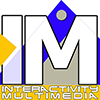In today’s digital age, multimedia content serves as a powerful tool to facilitate intergenerational learning. With the advent of smartphones, tablets, and computers, people of all ages can access and create multimedia content such as videos, podcasts, and interactive applications. These digital resources are not only convenient and engaging, but they also provide an avenue for older and younger generations to bond over shared interests and experiences.
For older individuals, multimedia content can serve as a gateway to rediscovering passions or learning new skills, potentially leading to a more fulfilling life. Exposure to multimedia tools can also improve their digital literacy, allowing them to participate more fully in a technology-driven world. For younger generations, collaborating with older adults in creating and consuming multimedia content can provide valuable insights into different perspectives, historical contexts, and wisdom accrued over a lifetime.
Additionally, multimedia content can stimulate meaningful discussions and problem-solving activities that foster deeper connections between generations. By working together on a digital project or sharing personal stories through multimedia platforms, older and younger individuals can develop empathy and understanding, thus strengthening intergenerational relationships.
In conclusion, intergenerational learning is a powerful educational approach that has the potential to unite people across age boundaries, promoting a more inclusive and understanding society. By leveraging multimedia content, we can not only enrich the learning experience, but also create opportunities for older and younger generations to form lasting connections and learn from one another’s unique perspectives and experiences.
Views: 5

